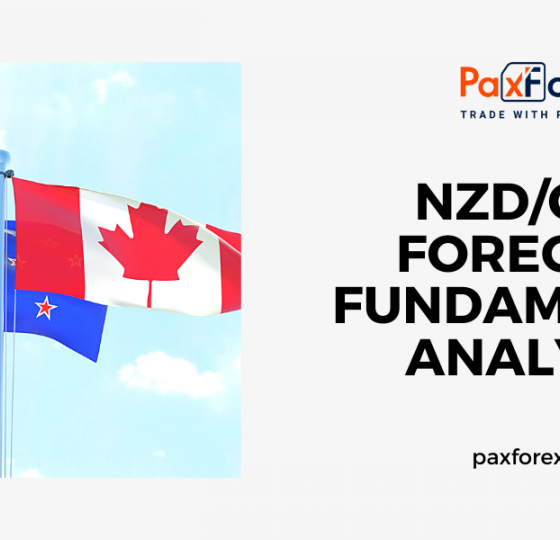New Zealand manufacturing volume posted another quarterly contraction and Chinese exports for November posted an unexpected contraction, bigger than the one reported in October. This confirmed that the global economy maintains its slowdown, and the advance in the NZDJPY is vulnerable to a breakdown. How will price action be impacted with the December 15th,2019 tariff deadline approaching? Today’s fundamental analysis will take a look at price action in both directions.
A strong upward revision to the final third-quarter Japanese GDP failed to boost the Japanese Yen as the NZDJPY remained at resistance, awaiting more global data. The Eco Watchers Survey disappointed and kept bullish momentum in check. Will the Japanese Yen see an inflow from safe-haven capital, or will forex traders finish the year with a risk-on mood? Subscribe to the PaxForex Daily Fundamental Analysis and earn over 5,000 pips per month.
Here are the key factors to keep in mind today for New Zealand Dollar trades:
- New Zealand Manufacturing Activity and Manufacturing Volume: New Zealand Manufacturing Activity for the third-quarter increased by 0.9% quarterly, and Manufacturing Volume decreased by 0.3% quarterly. Forex traders can compare this to New Zealand Manufacturing Activity for the second-quarter which decreased by 0.5% quarterly and to Manufacturing Volume which decreased by 2.7% quarterly.
- Chinese Trade Balance: The Chinese Trade Balance for November was reported at $38.73B. Economists predicted a figure of $44.50B. Forex traders can compare this to the Chinese Trade Balance for October which was reported at $42.54B. Exports for November decreased by 1.1% annualized, and Imports increased by 0.3% annualized. Economists predicted an increase of 0.8% and a decrease of 1.4%. Forex traders can compare this to Exports for October which decreased by 0.8% annualized and to Imports which decreased by 6.2% annualized.
Here are the key factors to keep in mind today for Japanese Yen trades:
- Japanese Bank Lending: Japanese Bank Lending including Trusts for November increased by 2.1% annualized and Japanese Bank Lending excluding Trusts increased by 2.3% annualized. Forex traders can compare this to Japanese Bank Lending including Trusts for October which increased by 2.0% annualized, and to Japanese Bank Lending excluding Trusts which increased by 2.2% annualized.
- Japanese GDP: The Final Japanese GDP for the third-quarter increased by 0.4% quarterly and by 1.8% annualized. Economists predicted an increase of 0.2% quarterly and 0.6% annualized. Forex traders can compare this to the previous Japanese GDP for the third-quarter which increased by 0.1% quarterly and by 0.2% annualized. The Final Nominal GDP for the third-quarter increased by 0.6% quarterly. Economists predicted an increase of 0.4% quarterly. Forex traders can compare this to the previous Nominal GDP for the third-quarter which increased by 0.3% quarterly. The Final GDP Deflator for the third-quarter increased by 0.6% annualized. Economists predicted an increase of 0.6% annualized. Forex traders can compare this to the previous GDP Deflator for the third-quarter which increased by 0.6% annualized. Final Private Consumption for the third-quarter increased by 0.5% quarterly and Final Business Spending increased by 1.8% quarterly. Economists predicted an increase of 0.4% quarterly and 1.4% quarterly. Forex traders can compare this to previous Private Consumption for the third-quarter which increased by 0.4% quarterly and to previous Business Spending for the third-quarter which increased by 0.9% quarterly.
- Japanese Current Account Balance and Trade Balance: The Preliminary Japanese Current Account Balance for October was reported at ¥1,816.8B. Economists predicted a figure of ¥1,806.8B. Forex traders can compare this to the Japanese Current Account Balance for September which was reported at ¥1,612.9B. The Preliminary Japanese Adjusted Current Account Balance for October was reported at ¥1,732.2B. Economists predicted a figure of ¥1,731.1B. Forex traders can compare this to the Japanese Adjusted Current Account Balance for September which was reported at ¥1,485.2B. The Preliminary Japanese Trade Balance for October was reported at ¥254.0B. Economists predicted a figure of ¥138.8B. Forex traders can compare this to the Japanese Trade Balance for September which was reported at ¥1.1B.
- Japanese Bankruptcies: Japanese Bankruptcies for November increased by 1.39% annualized. Forex traders can compare this to Japanese Bankruptcies for October which increased by 6.84% annualized.
- Japanese Eco Watchers Survey: The Japanese Eco Watchers Survey Current Index for November was reported at 39.4 and the Japanese Eco Watchers Survey Outlook Index was reported at 45.7. Economists predicted a figure of 39.7 and 44.6. Forex traders can compare this to the Japanese Eco Watchers Survey Current Index for October which was reported at 36.7 and to the Japanese Eco Watchers Survey Outlook Index which was reported at 43.7.
Should price action for the NZDJPY remain inside the or breakdown below the 70.950 to 71.500 zone the following trade set-up is recommended:
- Timeframe: D1
- Recommendation: Short Position
- Entry Level: Short Position @ 71.200
- Take Profit Zone: 68.400 – 68.900
- Stop Loss Level: 71.850
Should price action for the NZDJPY breakout above 71.500 the following trade set-up is recommended:
- Timeframe: D1
- Recommendation: Long Position
- Entry Level: Long Position @ 71.850
- Take Profit Zone: 72.700 – 73.250
- Stop Loss Level: 71.500
Open your PaxForex Trading Account now and add this currency pair to your forex portfolio. Do you hedge your forex trading account properly and protect it from downside risk? Find out how to properly secure your forex investment at PaxForex where you can grow your portfolio trade-by-trade!
We are one of the fastest growing Forex Brokers in the Market. Trade with PaxForex to get the full Forex Trading experience which is based on...
- The Reliability on all Assets in the Market
- Trusted Worldwide for over a Decade
- Live Multi-Lingual Online Support 24/5













